5 Ideas for Creating an Abundant Herb Garden and How to Begin
Welcome to my homestead garden! If you’re anything like me, you love the idea of stepping outside, brushing your hands through fragrant herbs, and picking fresh ingredients for your kitchen. There’s nothing quite like the satisfaction of growing your own food, and herbs are the perfect place to start. They’re easy to grow, don’t take up much space, and add a burst of flavor to every dish. Plus, they make your garden smell amazing!
I’ve been growing herbs for years—whether it was in my small backyard garden in Brooklyn or my thriving homestead today. I’ve learned a lot through trial and error, and I’m excited to share my best tips with you. If you’ve ever wanted to start an herb garden (or improve the one you have), here are five simple yet powerful ideas to create an abundant, flourishing herb haven.
1. Pick the Right Herbs for Your Lifestyle
Before you start planting, think about what you’ll actually use. I learned this the hard way—my first herb garden had everything from fennel to lemon balm, but I barely used half of them! Now, I focus on growing the herbs I reach for daily. Some of my go-to favorites include:
- Basil – Perfect for pesto, fresh salads, and adding to tomato dishes.
- Mint – A must-have for tea, mojitos, and homemade lemonade.
- Thyme – A hearty herb that pairs beautifully with roasted meats and vegetables.
- Rosemary – Ideal for marinades, breads, and even homemade cleaning sprays.
- Lavender – Adds a lovely touch to teas, baked goods, and sachets for the linen closet.
If you love cooking, focus on culinary herbs. If you enjoy herbal teas, plant chamomile, lemon balm, and mint. And if you’re into natural medicine, try growing echinacea, calendula, or yarrow.
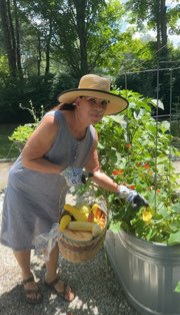
(Image 1: A charming kitchen herb garden with basil, thyme, and rosemary.)
2. Choose the Best Location for Your Herb Garden
I always tell new gardeners: location is everything! Herbs love sunlight, and most of them need at least 6 hours of direct sunlight per day. When I lived in the city, I grew my herbs on a sunny windowsill and in container gardens on the patio. Now, I have dedicated raised beds near my kitchen, making it easy to grab fresh herbs while I cook.
If you’re tight on space, try:
- Vertical Gardens – A great way to maximize small spaces. Use wall planters, hanging baskets, or tiered shelving.
- Windowsill Gardens – Perfect for apartment living. Small pots with herbs like basil and chives thrive indoors.
- Raised Beds or Containers – Ideal for keeping herbs organized and ensuring good drainage.
No matter where you plant, make sure your herbs are easily accessible. There’s nothing worse than growing gorgeous herbs, only to forget about them because they’re too far from your kitchen!
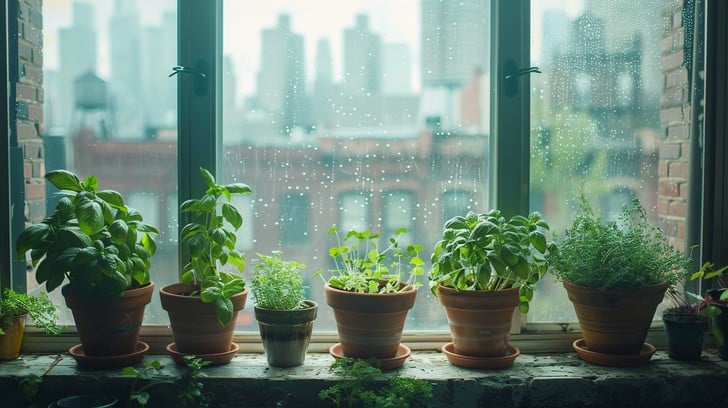
(Image 2: A cozy windowsill herb garden.)
3. Give Your Herbs the Best Soil and Care
I used to think that herbs would grow anywhere, but I quickly learned that good soil makes all the difference. Herbs love well-draining soil that’s rich in organic matter. I always mix in compost before planting, and I’ve found that a light, sandy soil works best for Mediterranean herbs like rosemary and thyme.
Here are a few of my soil and care tips:
- Use compost or organic fertilizer to keep plants healthy and nutrient-rich.
- Water deeply but infrequently – herbs hate soggy roots!
- Mulch with straw or wood chips to retain moisture and prevent weeds.
Some herbs, like basil, need frequent watering, while others, like rosemary and sage, thrive in drier conditions. Once you get to know your herbs, you’ll figure out the perfect care routine.
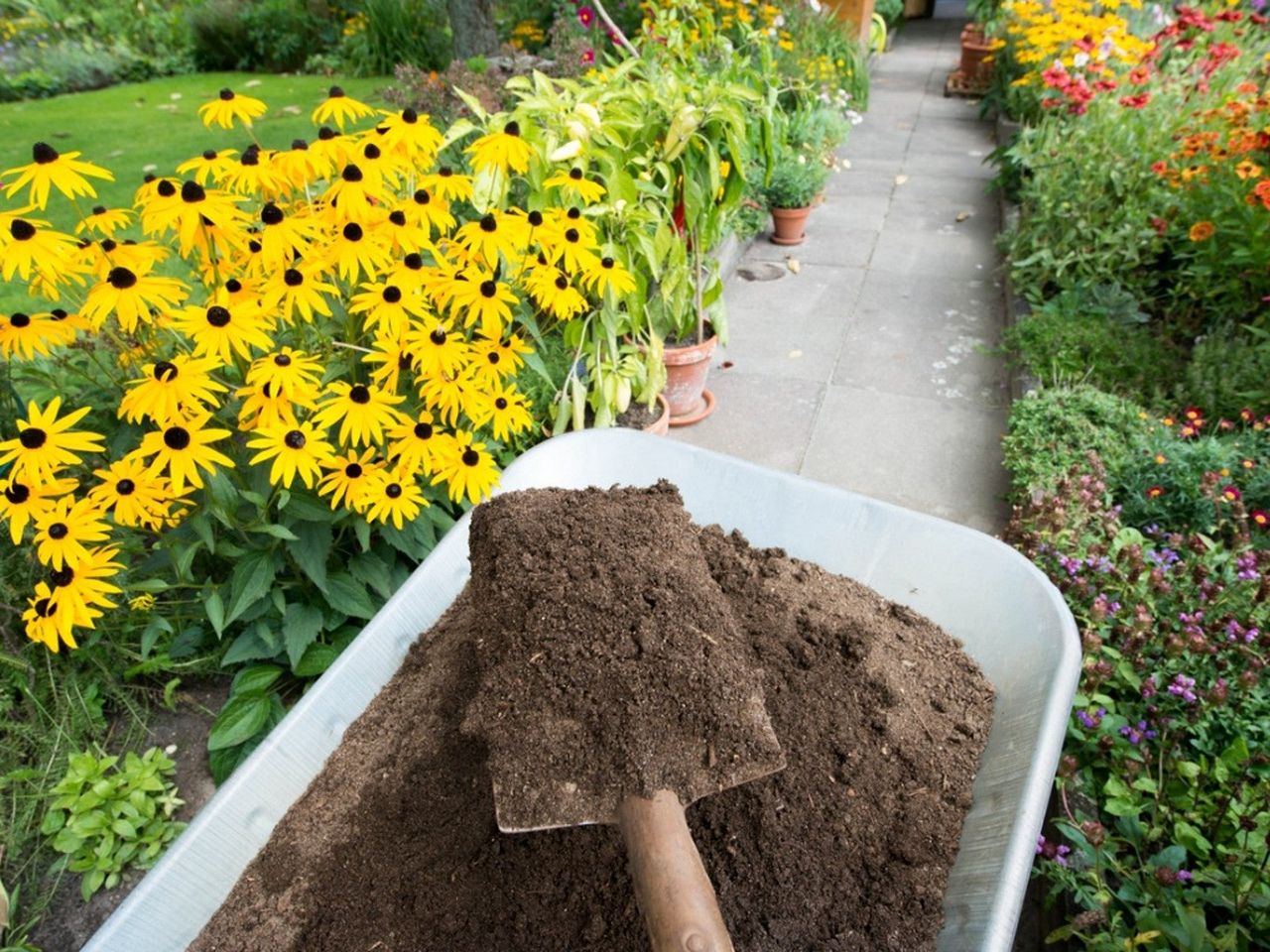
(Image 3: Fresh compost being added to an herb bed.)
4. Harvest Often to Encourage Growth
Here’s a secret: the more you harvest, the more your herbs will grow! When I first started growing herbs, I was afraid to cut them back too much. But letting them grow wild actually made them leggy and weak. Now, I make a habit of harvesting every few days, and my plants are bushier and healthier than ever.
- Pinch off basil and mint regularly to prevent flowering and encourage bushy growth.
- Trim rosemary and thyme sparingly to keep them from getting too woody.
- Cut chives all the way down to the base – they’ll come back stronger!
Fresh herbs can be used immediately, but I also love drying and freezing them for later. There’s nothing like opening a jar of dried homegrown oregano in the middle of winter!
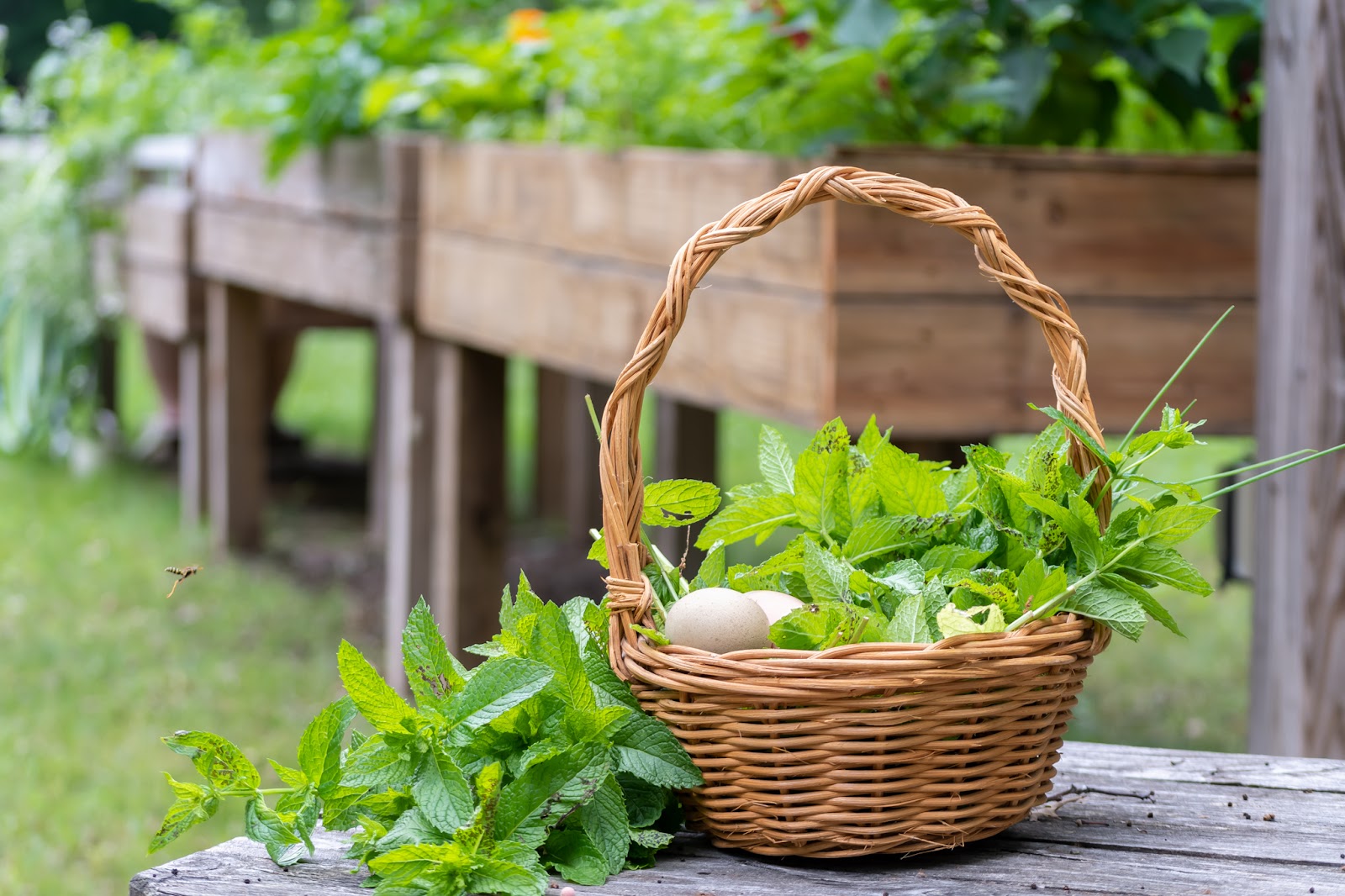
(Image 4: A bundle of freshly harvested herbs.)
5. Keep Pests and Diseases Away Naturally
One of the biggest surprises for me when I started homesteading was just how much pests love herbs. You’d think their strong scents would keep bugs away, but trust me, aphids, caterpillars, and fungal diseases can still cause trouble.
Here’s how I keep my herb garden healthy without chemicals:
- Companion planting – Planting basil near tomatoes improves growth and repels flies.
- Neem oil spray – A great organic way to deter aphids and mites.
- Encouraging beneficial insects – Ladybugs and bees help keep pests in check.
- Good airflow – Space plants properly to prevent mold and mildew.
A little bit of preventative care goes a long way in keeping your herbs thriving!
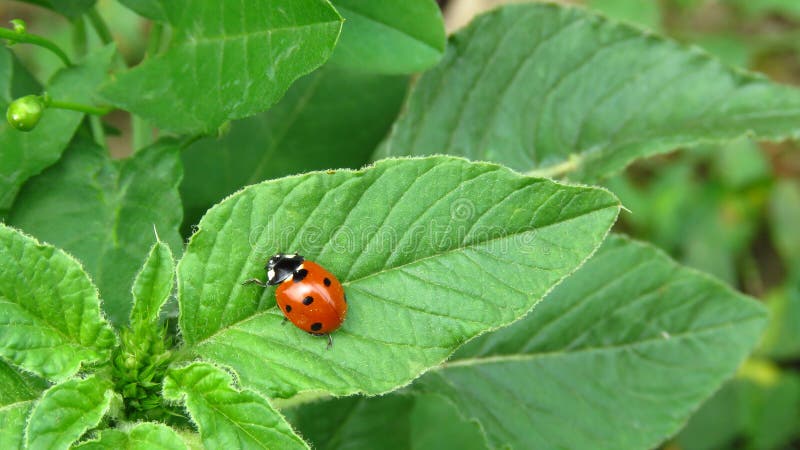
(Image 5: A ladybug crawling on an herb plant.)
How to Start Your Herb Garden Today
Ready to get started? Here’s a simple plan to kick off your herb garden:
- Pick Your Herbs – Choose the ones you’ll use the most.
- Find the Perfect Spot – Make sure they’ll get enough sunlight.
- Prepare the Soil – Add compost and ensure good drainage.
- Plant and Water Wisely – Give them room to grow and water as needed.
- Harvest Often – The more you pick, the healthier your plants will be!
Starting an herb garden doesn’t have to be overwhelming. Just plant a few of your favorites, give them a little love, and soon, you’ll have fresh, homegrown herbs at your fingertips!
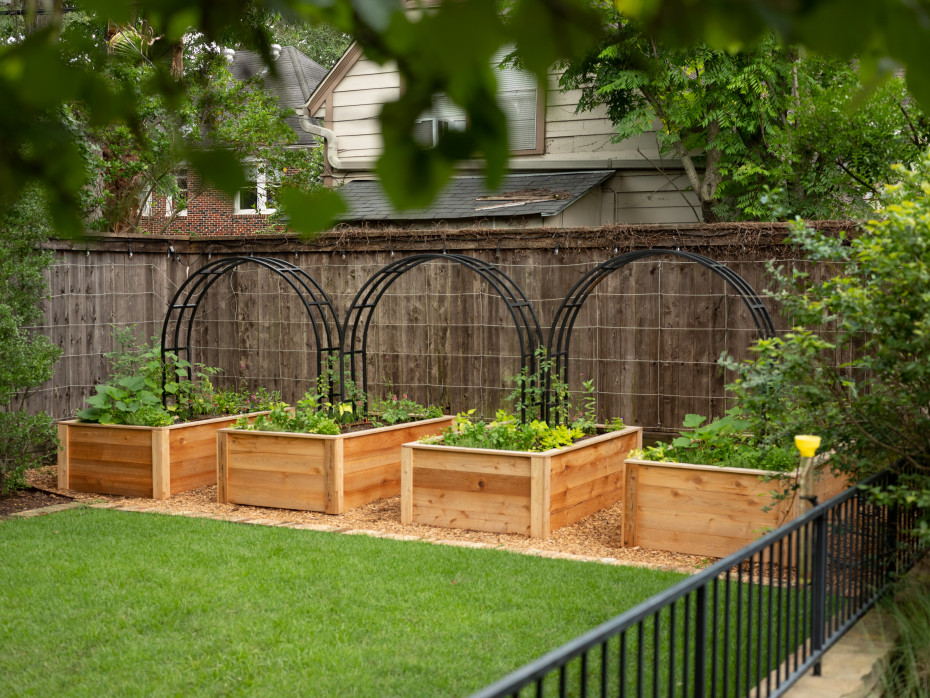
(Image 6: A thriving herb garden in a raised bed.)
Final Thoughts
There’s something truly magical about growing your own herbs. Whether you’re snipping fresh basil for a summer salad or drying lavender for homemade sachets, an herb garden brings joy and abundance to your homestead. I hope these tips help you create a flourishing herb haven of your own!
Have you started your herb garden yet? Let me know what you’re growing—I’d love to hear from you!

